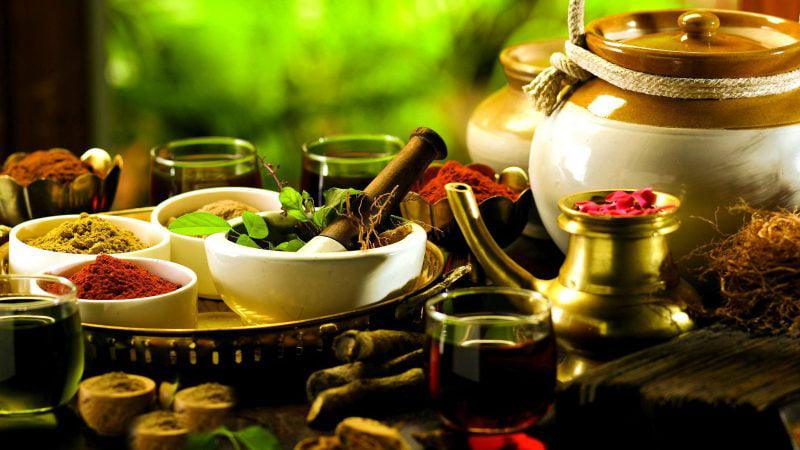Table of Contents
- Guide to Spice Garden Tours Sri Lanka
- The Historical Importance of Sri Lankan Spices
- Common Spices Found in Spice Gardens in Sri Lanka
- Expectations for a Spice Garden Tour
- The Ideal Time to Go to the Spice Garden
- Including Spice Garden Tours in Your Travel Plans for Sri Lanka
- Spices’ Place in Sri Lankan Cooking
- Spice Use in Ayurvedic Remedies
- Sustainability and Moral Issues
- Advice for Optimizing Your Spice Garden Tour
- Sri Lanka’s Spice Gardens’ Future
Guide to Spice Garden Tours Sri Lanka
For thousands of years, Sri Lanka, once known as Ceylon, has been famous for its spices. A vast range of aromatic and tasty spices can be grown on the island because to its tropical environment and varied landscapes. Spice Garden Tours Sri Lanka, which provide a distinctive fusion of gastronomic, botanical, and cultural experiences, are becoming a more and more well-liked tourist destination. Everything you need to know about spice garden tours in Sri Lanka will be covered in this extensive guide, from the background of the trade to what to anticipate on a tour today.
Spice garden tours provide an exceptional perspective of Sri Lanka’s opulent cultural and gastronomic past. They offer a multi-sensory experience to visitors that surpasses simple sightseeing, enabling a more profound comprehension of the island’s culinary, agriculture, and history.
Discover more about the spices that have formed trade routes, affected international cuisines, and are still essential to Sri Lankan daily life as you explore these aromatic havens. Every spice, from the pungent taste of pepper to the delicate aroma of cinnamon, relates a tale of agricultural customs, colonial impact, and culinary creativity.
A spice garden tour is a must-do on every travel itinerary to Sri Lanka, regardless of your interests in history, cuisine, or just local culture. It provides the ideal balance of knowledge and sensual enjoyment, leaving you with enduring memories and maybe a fresh understanding of the intricacy of flavors in your next meal.
Spice gardens serve as a reminder of Sri Lanka’s ongoing ties to its cultural heritage as the island nation expands its tourism offers. They respond to contemporary concerns in wellness, sustainability, and immersive tourism while still preserving ancient knowledge.
Thus, remember to incorporate a visit of the spice gardens in your itinerary while you travel through the Pearl of the Indian Ocean. Your perceptions will be stimulated, your knowledge will be expanded, and your perspective on the spices in your kitchen may be altered by this encounter. All you have to do is listen, smell, and taste to discover the stories that every leaf, bark, and seed in the fragrant world of Sri Lankan spices have to tell.
The Historical Importance of Sri Lankan Spices
The history of spices in Sri Lanka goes back more than 3,000 years. The island drew traders from all over the world as a pivotal location on the historic Spice Routes.
Historical Spice Trade
- The abundance of spices in Sri Lanka was initially discovered by Arab traders.
- It was believed that spices like cinnamon were worth more than gold.
- Sri Lankan cinnamon was highly valued due to its exceptional quality.
Colonial Inheritance
- The British, Portuguese, and Dutch invaders battled it out for dominance of the spice trade.
- In the seventeenth century, the Dutch East India Company controlled the whole supply of cinnamon.
- Later, British farms began to grow tea, rubber, and coconuts, but the importance of spices persisted.
Contemporary Period
- High-quality spices are still a major export from Sri Lanka.
- Nowadays, spice gardens are used for both agriculture and tourism.
Common Spices Found in Spice Gardens in Sri Lanka
Spice gardens usually have a large range of plants on display. The following are a some of the most typical spices you may come across
1. Cinnamon (Kurundu)
– Sri Lanka’s most famous spice
– Known for its sweet, warm flavor
– Used in both sweet and savory dishes
2. Black Pepper (Gammiris)
– Often called the “King of Spices”
– Grown on vines that can reach up to 10 meters high
– Both black and white pepper come from the same plant
3. Cardamom (Ensal)
– Grows in the cool, shady areas of the hill country
– Used in Sri Lankan curry powders and tea
4. Cloves (Karabu Nati)
– Aromatic flower buds of the clove tree
– Used in spice blends and for medicinal purposes
5. Nutmeg and Mace (Sadikka)
– Nutmeg is the seed, while mace is the lacy covering around the seed
– Both come from the same fruit
6. Vanilla
– Grows as a climbing orchid
– Pods are fermented to develop their characteristic flavor
7. Turmeric (Kaha)
– Known for its bright yellow color and earthy flavor
– Widely used in curries and for its health benefits
8. Ginger (Inguru)
– The rhizome is used fresh or dried
– Popular in both culinary and medicinal applications
9. Lemongrass
– Used in teas, soups, and curry dishes
– Known for its citrusy aroma
10. Curry Leaves (Karapincha)
– Essential in Sri Lankan cuisine
– Used fresh in many dishes for added flavor
Expectations for a Spice Garden Tour
Spice tours provide guests with a multi-sensory experience, letting them see, smell, touch, and frequently even taste the spices in their natural habitat.
Tour Organization
Greetings and Overview
- Frequently comes with a cool herbal beverage
- A synopsis of the Sri Lankan spice trade and the spice garden
Lead Walk
- A skilled guide takes you on a tour of the garden.
- Differentiating between spice plants
- A description of the growing environment and harvesting techniques
Sensory experince
- The chance to handle and smell freshly ground spices
- Occasionally involves sampling uncooked spices or goods infused with spices.
Exhibition
- A demonstration of spice processing is included in many visits.
- A common instance is the peeling of cinnamon.
Medical Application
- Details on the customary Ayurvedic applications of spices
- Talk about the advantages of contemporary health
Showcase of Products
- Exhibit of goods made with spices (cosmetics, oils, teas)
- The ability to buy products and fresh spices
Gastronomic Adventure
- A cooking class or demonstration is part of certain tours.
- Snacking on food flavored with spices
Length and Price
Most trips take one to two hours.
- Costs normally vary from $5 to $20 per person, according on the garden and activities offered.
Popular Sri Lankan Spice Gardens
The Spice Garden of Matale Situated in the Province of Central
- One of the biggest and most renowned gardens of spices
- Provides thorough tours and Ayurvedic remedies.
Herbal and Spice Garden of Euphoria
- Close to Kandy
- Well-known for its scenic location and informative tours Emphasizes using spices for both culinary and medical purposes.
Spice Garden Ranweli At Kandy
- Provides thorough justifications of Ayurvedic procedures
- Gorgeous, immaculate gardens
Mirissa’s Spice Garden Situated in the Province of the South
- Combines a cooking class with a spice tour
- Gorgeous location along the coast
The New Spice Garden at Ranweli
- Close to Sigiriya
- Provides an extensive overview of herbs and spices
- Recognized for having informed and kind guides
The Ideal Time to Go to the Spice Garden
- You may explore spice gardens all year long.
- The best time to go is during the dry season, which runs from December to March.
Certain spices have particular harvesting seasons, which can improve the experience of the tour:
- From May to November, cinnamon
- From February to April, cloves Pepper: From December through February
Including Spice Garden Tours in Your Travel Plans for Sri Lanka
Tours of spice gardens are easily incorporated into a variety of Sri Lankan holiday itineraries:
The Triangle of Cultures
- See spice gardens close to Matale or Dambulla Combine with trips to historic cities such as Polonnaruwa and Sigiriya
The Countryside Tour
- Visit a spice garden close to Kandy.
- Go on picturesque train excursions and visits of tea plantations.
Exploration of the Southern Coast
- See the coastal spice gardens close to Mirissa or Galle.
- Include whale watching and beach activities.
Ayurvedic and Wellness Journey
- Emphasize Ayurvedic-inspired spice gardens Combine with trips to yoga retreats and Ayurvedic resorts
Spices’ Place in Sri Lankan Cooking
Knowing spices improves one’s appreciation of Sri Lankan cuisine:
Use of curry powders Every home frequently has a unique combination. Thuna paha, or roasted curry powder, is a specialty of Sri Lanka.
Differences by Region
- More chili is used in Jaffna cuisine.
- Seafood and coconut are more prevalent in coastal areas.
Certificate Plates
- Rice and curry: An assortment of curries using various flavors
- Lamprais: a rice, pork, and spice dish wrapped in a banana leaf with Dutch influences
Spice-Intense Drinks
- Cardamom and cinnamon are common spices found in Ceylon tea.
- Herbal beverages such as ranawara (Ceylon sarsaparilla) tea and ginger beer
Spice Use in Ayurvedic Remedies
Ayurvedic applications of plants are highlighted in many spice gardens:
Curcumin
- Anti-inflammatory qualities
- Used for intestinal health and skin treatments
Sugar
- Said to assist in controlling blood sugar
- Applied in the management of stomach disorders and colds
Zinger
- Promotes better digestion and lessens nausea
- Applied in the management of joint discomfort
Cardamom
- Seen as an air freshener
- For the relief of gastric discomfort
Loves
- Natural analgesic, frequently applied to dental pain
- Said to possess antimicrobial qualities
Sustainability and Moral Issues
When you visit spice gardens, keep the following in mind:
Ethical Business Conduct
- Seek for gardens that benefit nearby communities.
- Inquire about equitable worker compensation
Eco-Friendly Farming
- A lot of gardens are switching to organic practices. Spices that are organic are growing in popularity.
Impact on the Environment
- Sustainable spice farming can aid in the preservation of biodiversity. Certain gardens take part in the process of replanting.
Preservation of Culture
- Spice gardens contribute to the preservation of customs and knowledge
- Encourage gardens that allow residents access to educational opportunities
Advice for Optimizing Your Spice Garden Tour
- Inquire about the production and applications of spices
- Guides frequently share their own experiences and wisdom.
Make Use of Every Sense
- Feel, smell, and if you can, taste the spices
- Take note of the various scents and textures of fresh spices.
Record or Take Pictures
- Keep a record of the spices for further use.
- A lot of gardens permit photography (but always check)
Experience Something Firsthand
- Take part in demonstrations when possible
- A few gardens provide quick courses on preparing spices.
Think About Buying Spices
- Purchasing straight from gardens helps regional businesses. Spices that are top-notch and fresh make excellent keepsakes.
Incorporate a Cooking Course
- Some spice gardens provide classes on cooking.
- Discover how to use spices into real Sri Lankan food.
Sri Lanka’s Spice Gardens’ Future
Spice gardens are changing to satisfy the needs of the market and the expectations of tourists:
Integrated Ecotourism
- Sustainable approaches are being highlighted in many gardens.
- A few provide overnight stays in environmentally conscious lodgings.
Improving Technology
- Remote exploring is becoming possible with virtual tours.
- Apps and QR codes offer more details while visiting
Information and Learning
- Some gardens work with academic institutions to conduct research on spices.
- Creation of novel spice-based goods for international markets
Attempts at Cultural Preservation
- Recording of customary cultivation techniques for spices
- Initiatives to impart knowledge to the next generation
Travel for Wellbeing
- A growing emphasis on the advantages of spices for health
- Integration with wellness centers and Ayurvedic retreats

